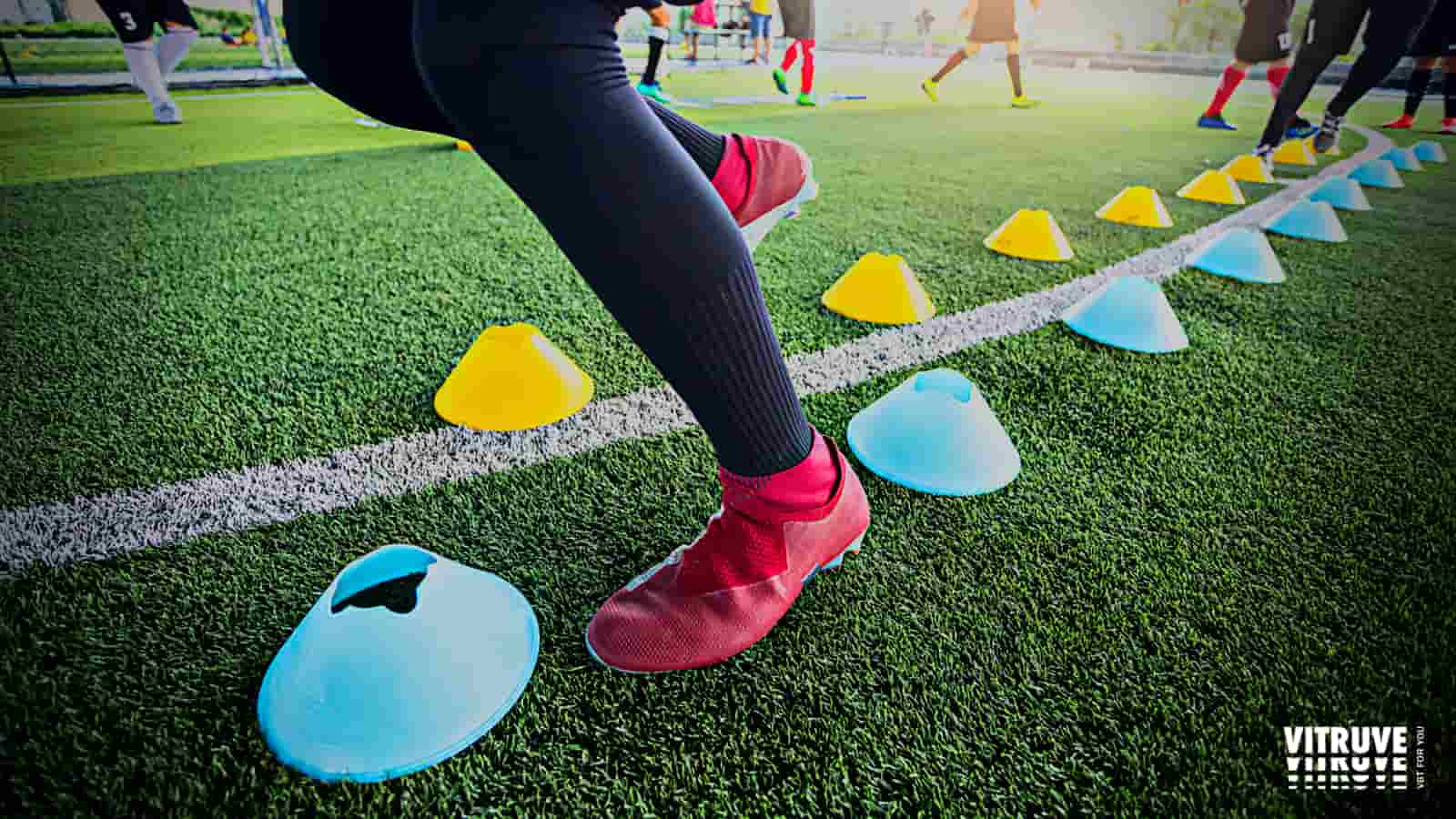7 de September de 2022
What Is Aerobic Endurance and How To Improve It
Whether you’re taking on long-distance runs, triathlons, swimming, or cycles, endurance training will ensure you’ll last the distance and reach your goals. It might be less obvious, but endurance training is primarily aerobic exercise. This is an exercise that can be performed for longer than a few minutes without collapsing. Your heart pumps oxygenated blood to working muscles during aerobic activity, which allows them to burn fat and carbs.
In contrast, anaerobic exercise does not require oxygen. It occurs when you work at a high intensity that your heart is unable to deliver oxygenated blood to your muscles, which explains why sprinting or explosive power moves are very short-lived. Is aerobic endurance exactly what it sounds like? How is aerobic endurance beneficial for you? What’s the best way to improve your aerobic endurance? We’ve got all your aerobic endurance questions covered. Read on to know more.
Aerobic Endurance-What Is It?
Among its many names, aerobic endurance is also known as cardiovascular endurance, cardiorespiratory endurance, and aerobic fitness. A person’s aerobic endurance refers to their ability to exercise for extended periods at a moderate intensity. Running longer distances, swimming, and triathlons all are examples of aerobic endurance. When you are engaged in sustained physical activity, your cardiorespiratory system is essential for supplying nutrients and oxygen to your muscles. Weightlifters and gym goers commonly refer to aerobic exercises as Cardio.
Therefore, Keeping the muscles burning fat and carbohydrate for fuel is essential for endurance, since oxygen helps muscles burn calories. If you’ve worked out aerobically, chances are you’ve heard the phrase VO2 max as well. A person’s VO2 max is the maximum rate at which their heart, lungs, and muscles can utilize oxygen during exercise. Increasing cardiorespiratory endurance improves your body’s ability to consume oxygen, so you can work out for longer periods and burn more fuel.
Summarized Benefits Of Aerobic Endurance
Aerobic endurance improves your fitness, and your ability to cover longer distances, and provides many other benefits including:
- You become more stamina-efficient when you exercise aerobically.
- By exercising aerobically you feel more energetic as your body becomes more efficient at moving oxygen into the blood, where it can be used by muscles.
- It aids in controlling blood pressure.
- It helps in blood sugar regulation.
- It can lower your cholesterol, lessening the danger of cardiovascular diseases.
- It enables you to burn additional calories to maintain an ideal weight.

Training Tips To Help Improve Your Aerobic Endurance
To prepare for distance competitions, training for cardiorespiratory endurance should be the priority. Thankfully, there are several effective ways to achieve this.
1. Take Your Time And Go Slowly
Training plans often include long Sunday runs or rides, and for good reason. When you exercise at a lower intensity, your body is not overworked, allowing you to increase your aerobic endurance. Slowing down can also make you more efficient at burning fat rather than glycogen. The body’s glycogen stores run low after about 90 minutes, which is why we need to consume energy gels and sweets/chews, and fuel during endurance exercise. However, if your body is also able to burn fat you can become more efficient while endurance exercising.
2. Put In Some Strength Training
In addition to aerobic training, strength training can boost endurance. It is possible to become more efficient over longer distances by working on sport-specific movements. This allows you to maintain proper form and keep your muscles working for longer without becoming fatigued. Furthermore, apart from burning oxygen at work, strength training by directly impacting muscle mass can also improve the efficiency of oxygen consumption in your body.
3. Attempt Some HIIT
A HIIT session is a short burst of intense exercise performed at 80%-90% of your maximum heart rate. It recruits primarily fast-twitch muscle fibers rather than slow-twitch. When combined with longer runs, rides, swims, and other physical activities, HIIT can be very beneficial to endurance. Studies have shown it can increase your VO2 max by as much as 46% in 24 weeks to boost your fitness. Furthermore, it can reduce your resting heart rate and increase the amount of blood your heart pumps.
From measuring your performance on HIIT to other strength training exercises, you may want to benefit from Vitruve – the ultimate fitness tracking solution for a majority of your workouts. This small-sized encoder connects with your phone through its proprietary app to help you with real-time measurements as you exercise.
With the Vitruve encoder, both intensities and training volumes can now be controlled by the initial repetition speed of the active series or the loss of intra-series speed. You cannot avoid the fact that encoder training can be a major change and a step up in your training program.

4. Carve It Up Gradually And Rest
Exercise that improves aerobic endurance must be done gradually and consistently, just like any other exercise. When you gradually increase your workout distance or duration, you reduce your risk of injury and give your body time to adapt. The importance of rest days for any training schedule cannot be overstated. The body adapts to training stresses by rebooting, repairing, and refueling during rest. You could be at risk for overtraining syndrome if you skip rest days. Studies suggest that In addition to causing chronic burnout, overtraining negatively impacts your performance and puts strain on your heart and muscles.
5. Prefer Natural Energy Boosters
Even though caffeine won’t raise your VO2 max, it will boost your endurance performance and enable you to continue exercising for a longer period. Throughout history, caffeine has been known as nature’s secret weapon. Through direct effects on your central nervous system, it improves your reaction speed, alertness, and concentration while reducing your perception of pain and exertion. Having caffeine will make you feel more awake and allows you to exercise harder for a longer period. Having caffeine may allow you to feel less strenuous and your efforts feel less arduous.
6. Eat Healthy & Recover Faster
The recovery period is crucial for your body to adapt to the stress it has been put through during exercise. During this process, your body’s tissues heal, and your muscles replenish their glycogen reserves. During aerobic exercise, microtears are created, and the healing process is enabled by recovery. Apart from that, rebuilding stores and facilitating repair and reconditioning of muscles require optimal nutritional intake. Energy and protein bars, as well as recovery/protein shakes, are specific products that will help you in this situation.
Moreover, listening to music while training could help boost your aerobic endurance if you struggle with motivation. Research suggests listening to music during aerobic exercise may prolong your workout and reduce your feeling of exertion. As a result, you can work out longer and feel less fatigue.
Wrapping Up
Training at a light to moderate intensity that uses oxygen to meet energy demands is known as aerobic endurance training. The amount of oxygen your heart pumps throughout your body to your active muscles is the indicator of your cardiovascular fitness level. You can improve your aerobic endurance with frequent endurance training. Strength training and Interval-based training, like HIIT which involves alternating bursts of light and high-intensity activity, are one of the best ways to improve aerobic capacity and cardiovascular health. It is also important to take other important measures while exercising aerobically such as staying hydrated and taking maximum rest to recover fast etc.

